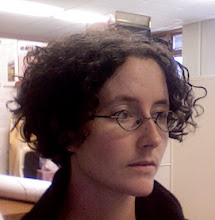Got up early my last morning in Palo Verde to spend a little more time in the woods. Got a few more plant photos, saw a mot-mot and another trogon, and my first roadside hawk. We loaded up the bus at 7:30 and were on the road by 8:00. This bus wasn’t air-conditioned, which made me happy (although not everyone felt that way). As long as it was moving, it was very comfortable in the front. Dusty in the back, apparently. It was mosty dirt roads down the Nicoya peninsula; a 7-hour trip. 60 km as the crow flies, and not really all that far the long way around, but we probably averaged 20mph. With a couple of Dramamine I was happy, and awake enough to enjoy some of the scenery. We scanned the rice fields hoping to see a Jabiru (rare stork relative) without luck, but the agricultural landscape was interesting. There were lots of living fences recently macheted, several teams of oxen pulling wagons, lots of people herding cattle horseback.
We stopped at a gas station for a break and to pick up a couple of new resource faculty for Cabo Blanco. Across the street there was a huge statue of a bull, the big grey variety with hump at the withers and floppy ears. The guys in our group were fascinated by the to-scale genitals, of course, and had to take lots of pictures! Anyway, that’s the most common type of cattle out here.
At the next stop we had lunch and I bought my very first pair of flip-flops, $5. I’m glad to have them, because I think this is the only side where we’re allowed to wear open-toed shoes, and my feet could use the air. I don’t want them to start rotting before we even get to the wet forest!
When we got to Cabo Blanco we had to hike in 2km, the last 500 m carrying all of our belongings. Everyone said my bags were huge, but they weren’t bigger than average – I think they just look that way because I’m small. ☺ I was glad to put them down at the dorm, though, and am considering what I might be able to leave behind when we hike into our last site, Corcovado – 20 km.
I’ve decided to swear off being melancholy about leaving a site, because the next place is bound to be even more amazing. And there are pochote trees here, too, which are my favorite this week. Cabo Blanco is on the very tip of the Nicoya Peninsula. It’s an Absolute Reserve, so no one is allowed here except 12-14 invited groups a year. So there’s very low human impact. There is beautiful rocky/sandy beach, amazing tidepools and a lagoon that is safe to snorkel in at low tide, and a steep hill away from the beach with thick forest and cool birds. All 22 of us are staying in one small building, minimal walls (mostly just screen), porch all around, with steps down the front to the beach. There is no electricity here, just a generator that they run a few hours a day for the course needs. We’ve got running water, though, and I don’t miss hot water at all. It’s much more humid here, so the heat feels hotter.
They have scheduled more free time in here, which I’m looking forward to. We can snorkel every morning if we want to. The dangers here are different from Palo Verde, except for scorpions. There are a lot of vampire bats because of the high concentration of livestock around. That explains the large mesh on our dorm, which wouldn’t keep mosquitoes out – there don’t seem to be any here! When we’re snorkeling have to watch for the changing tide in the lagoon because of the waves and also because sharks come in at high tide. Apparently lots of them. Other than that, the only thing to watch out for seems to be a tsunami. Very unlikely, of course, but there are two tectonic plates meeting 40km off the coast, so if there was a quake there we’d have about 15 minutes to get uphill. No worries, if you’re reading this, it means it didn’t happen! Or I grabbed my computer on the way up.
I’m really looking forward to catching up on sleep here – barely made it through the couple of lectures we had.
I saw a few new birds on my way in. Lots of brown pelicans, they fly over regularly; magnificent frigatebirds are also very common here. A white-necked puffbird was a real treat, and I saw my first social flycatcher, too. They’re apparently very common, but I hadn’t noticed one before.
Subscribe to:
Post Comments (Atom)

No comments:
Post a Comment